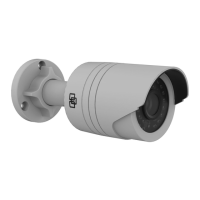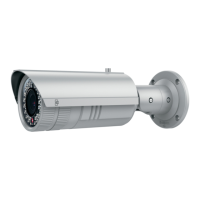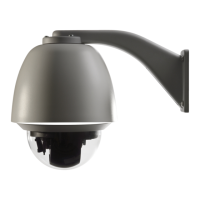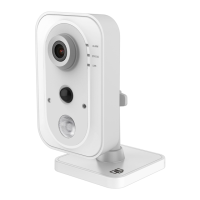network settings from that server.
IPv4 Address: If necessary, type in the IPv4 address of the camera.
IPv4 Subnet Mask: If necessary, type in the IPv4 subnet mask.
IPv4 Default Gateway: If necessary, type in
the IPv4 gateway IP address.
IPv6 Mode: Select Manual, DHCP, or Router Advertisement from the
drop-down list.
IPv6 Address: Type in the IPv6 address of the camera.
IPv6 Subnet Mask: Type in the IPv6 subnet mask.
IPv6 Default Gateway: Type in the IPv6 gateway IP address.
Mac Address: If necessary, type in the MAC address of the devices.
MTU: Type in the valid value range of MTU. Default is 1500.
Multicast Address: Enter a D-class IP address between 224.0.0.0 to
239.255.255.255. Only specify this option if using the multicast function.
Some routers prohibit the use of multicast function in case of a network
storm.
Enable Multicast Discovery: Enables the automatic detection of the
online network camera via private multicast protocol in the LAN.
DNS server: Specifies the DNS server for the network.
See page 17 for setup information.
2.
DDNS is a service that maps Internet domain names to IP addresses. It is
designed to support dynamic IP addresses, such as those assigned by a
DHCP server. DDNS permits remote connection to the camera’s network;
however the router serving that network must be configured properly for
remote access.
Make a selection from the DDNS Type drop-down list (IPServer,
DynDNS, ezDDNS, or NO-IP).
DynDNS (Dynamic DNS): Manually create a host name. A user account
must first be created using the DynDNS.org hosting web site.
ezDDNS: Activate the DDNS auto-detection function to set up a dynamic
IP address. The server is set up to assign an available host name to the
recorder.
IPServer: Type in the address, host name, and user name for the IP
Server.
See page 17 for setup information.
3.
HTTP Port: The HTTP port is used for remote internet browser access.
Enter the port used for the IE browser. Default value is 80.
RTSP Port: RTSP (Real Time Streaming Protocol) is a network control
protocol designed for use in entertainment and communications systems
to control streaming media servers. Enter the RTSP port value. The
default port number is 554.
HTTPS Port: HTTPS (Hyper Text Transfer Protocol Secure) allows video
to be securely viewed when using a browser. Enter the HTTPS port,
value. The default port number is 443.
Server Port: This is used for remote client software access. Enter the
server port value. The default port number is 8000.
Alarm Host IP: Specifies the IP address of the alarm host.
Alarm Host Port: Specifies the port of the alarm host.
See page 17 for setup information.
4.
A NAT (Network Address Translation) is used for network connection.
Select Auto or Manual from the Port Mapping Mode drop-down list. See
page 18 for setup information.
16 TruVision 81 Series IP Camera Configuration Manual
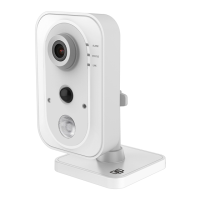
